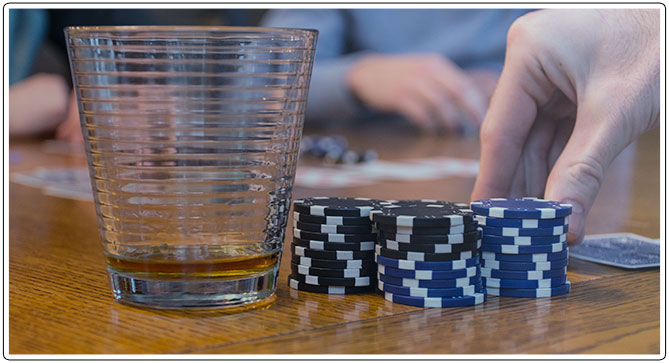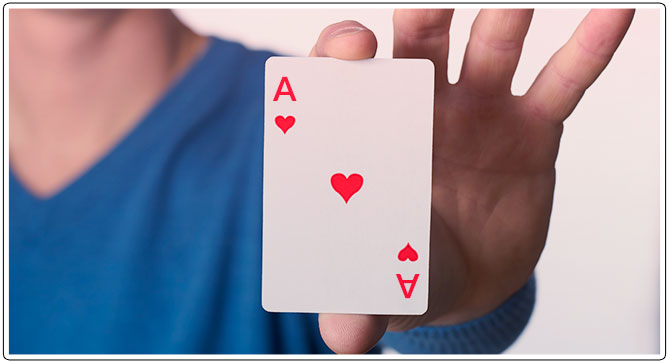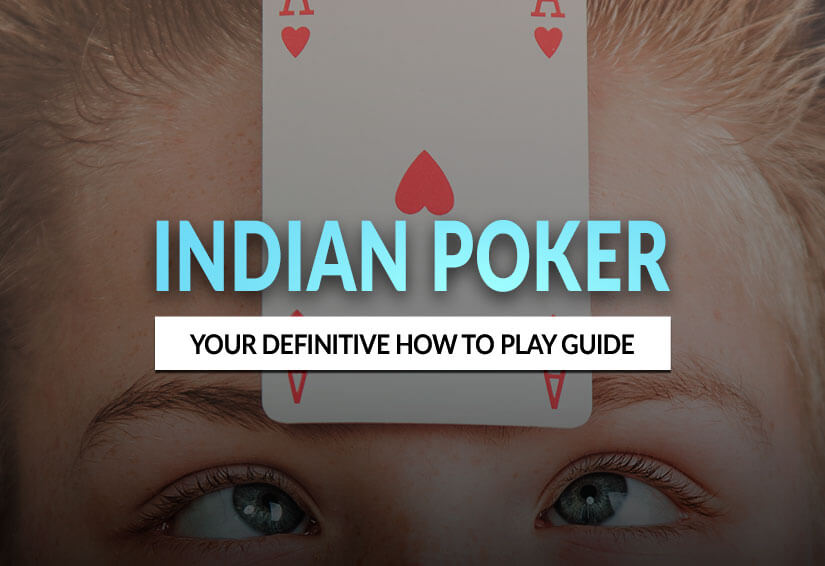Even though it is typically not played at most casinos, Indian Poker is one of the most fun poker games to play. Also referred to as Blind Man’s Bluff or Squaw poker, this game is an extremely simple yet pretty unconventional version of poker. These are why it is considered such a popular game among players, especially in casual settings such as home poker games, where it is just friends playing against each other. In most cases, it is treated as a drinking game, but the participants can also spice it up by playing for real money.
All in all, this poker game is an excellent pastime that is definitely worth your time and money. In this guide, I will break down all of its aspects to give you a more in-depth insight into what to expect.
What Do You Need to Get Started
Indian Poker, just like all other popular variants of poker, requires players to use a standard deck of 52 cards with the Jokers removed. More often than not, one or more shot glasses would be included, but only when it is treated as a drinking game. In case you are playing for real money which is usually very rare, you may include some chips or money.
When it comes to the number of players required to play the game, there can be 2 to 10 players. 3 is usually the recommended number of players to start a game, but the ideal number for maximum fun is between 6 and 10 players.
If you are playing the variation known as Blind Man’s Bluff – where players receive two cards – then two players would be the best number of players. Still, the main takeaway here is that the more players at the table, the more fun this game becomes.

How to Play Indian Poker
As mentioned earlier, Indian Poker is a very simple game, meaning that all of its rules and guidelines are straightforward. Even people who have never played the game before will be able to grasp the concepts and play alongside avid gamers quickly. Here is a breakdown of the game’s objectives and how to play it:
The Objective
The only objective in Indian Poker is to have the highest card in play to win the pot. Players make bets with the hopes that they have the best hand to win. That said, unlike other variations of poker, in Indian Poker you will have to calculate your odds of beating your opponent’s hand without even knowing what your hand is. It gets slightly more complex if community cards happen to be involved.
How Cards Are Dealt in Indian Poker
Before the cards are dealt in some Indian Poker games, especially those where the participants are playing for real money, all players need to place a pre-deal wager called an ‘ante’. Once that is done, the dealing begins.
Each of the players at the table is then dealt with one single face-down card each. In a typical Indian Poker game, community cards are not necessarily with the only high priority cards (10 to A) being in play. In some other variations of the game, players may receive two or more cards, and these addition cards are meant to complicate the game further, something many people find to be more fun.
Once all of the cards have been dealt, each player holds up their cards so that every other player can see it. In most cases, the cards are pinned on the player’s head where every player except the card owner can see it.
The Betting Round
The betting round is even more proof that Indian Poker is a straightforward game. There is only one betting round, and the players can decide to check, bet, raise, or fold, depending on the apparent strength of the cards that are visible to them. Players can only check or pass if no one else has placed a bet yet.
Once the betting round begins, the action moves in a clockwise manner, with the round ending when each of the players has called or folded, and no one has made a re-raise after the last raise. All the players who made it to the end of the round then compare their cards.
How the Winner is Determined
After all the cards are compared, the player with the highest cards wins the round. Depending on the variation of Indian Poker, the player who has the highest cards either wins or gets to take the pot – the latter applies when real money is involved.

In case there is a tie, the winning players will share the spoils equally. The player with the lowest hand will take the shot glass and drink.
Different Varieties of Indian Poker
Indian Poker is a pretty impressive variation of poker by itself, but players do not have to stick to the variant where each of the participants is dealt a single card. To spice up the gaming experience, there is a different variant of Indian Poker that players can try out.
Perhaps the most notable variant that you should try to find is Forehead Stud, which is also a variation of stud poker. Here, one or more of the hole cards remain hidden from their owner but are shown to the other players at the table.
Other popular variations of Indian Poker include
- One-Card Poker
- Multi-Card Poker
- Match Pot Betting
- Indian Texas Hold’em
- Indian Stud Poker
Summary
Whenever you are thinking of playing some fun games with your friends, Indian Poker should be a no-brainer. Whether you like to play it as a drinking game or use real money as the ante, you can rest assured that a fantastic experience awaits you. The fact that it is a simple and straightforward game makes it even more enjoyable.
FAQ
Indian Poker is a unique variant of poker where the players are typically dealt one card each. The players can view all the cards that have been dealt but their own.







